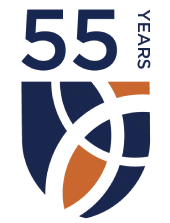Berger Montague Announces Nationwide Series of Suits on Omnicare’s ‘Swapping’ Scheme–Pt 2
In yesterday’s post, we discussed the details of the case we are working on against Omnicare, Inc. and various other pharmacy service companies. We provided an in-depth look into Medicare Part A and D benefits and how Omnicare was profiting from kickbacks offered to nursing homes desperate to provide cost-effective prescription drugs to their Medicare Part A patients. In today’s post, we take a closer look at some of the statistics associated with this scam, which may help to shed light on the true complexity of the problem.
The Numbers
Petitioners’ complaint, in the United States ex rel. Silver v. Omnicare matter, contains a number of charts and graphs to further illustrate the exorbitant profits Omnicare was receiving, allegedly, at the cost of state and federal tax dollars. Interestingly, prior to 2006, Omnicare attributed 45 percent of its sales to state Medicaid programs and just two percent to Federal Medicare programs. After 2006, Omnicare received 10 percent of sales from state Medicaid and 45 percent of sales from federal Medicare. In 2012 alone, Omnicare received $3 billion from the federal government.
Petitioner’s Complaint provides an analysis of the alleged fraud through a sample invoice gathered during the investigation which clearly shows below-market pricing for Medicare Part A benefits. For instance, one statement from a Pennsylvania nursing home reveals a per diem prescription drug charge for a Medicare Part A patient of just $14 per day or just $434 per month, which the complaint alleges is below the market price for these drugs Conversely, Medicare Part D patients are charged market value for their prescription drugs and medical services.
Petitioner’s Complaint further reasons that there can be no other explanation for the deeply-discounted rates offered for Part A patients other than to induce facilities to retain Omnicare for Part D and other “full-price” patients. In its legal analysis, Petitioner points out that, as all Americans are aware, the price of prescription medications is rising faster than the rate of inflation. As well, the number of medications required by each individual nursing home patient has risen in recent years. These two facts combined make it unlikely for a pharmacy company to offer such discounted rates, as any company that did so would soon be out of business.
Therefore, the allegation is that there is a kickback scheme in order to make up front-end losses on the back end. Petitioners rely on the following facts to prove this point:
- In 1994, the average nursing home patient was taking 5.4 daily medications, and was ordered 3.4 “as needed” (“prn”) medications;
- By 1997, the average nursing home patient was taking 5.9 daily medications, and was ordered 3.6 prn medications;
- By 2000, the average nursing home patient was taking 6.7 daily medications, was
- ordered 2.6 prn medications, and was actually administered 3.75 prn doses of medication per day;
- By 2003, the average nursing home patient was taking 8.1 daily medications, and
- was ordered 3.2 prn medications.
This kind of fraud is not just a matter of money, but one of trust. Companies that engage in kickback schemes in order to make money from their profits rarely do so because they know they have superior service.
Omnicare to Face Enormous Penalties
Time will tell what the future holds for Omnicare, Inc. and the other defendants named in this litigation. The federal per diem claims against Omnicare were settled last week for $120 million, however the 28 other state cases remain alive in federal District Court in New Jersey. We encourage you to stay tuned with Berger Montague for updates in this important and pivotal False Claims Act litigation and, if you are aware of similar misconduct, contact a whistleblower attorney today.











